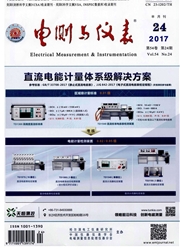

 中文摘要:
中文摘要:
Medium access control( MAC) protocol of underwater acoustic communication network is a key technology for underwater acoustic networks( UANs). Most of the MAC protocols for wireless terrestrial communication networks have been designed with negligible propagation delay. If it is deployed directly in an underwater environment,the UANs will perform inefficiently. In this paper,the characteristics of underwater acoustic channel are modeled and simulated by using the OPNET simulation tool,which are the speed of sound, propagation loss, and four sources for ambient noise: the turbulence,shipping,wind driven waves and thermal noise. The performance of pure Aloha( P-Aloha),carrier sense multiple access with collision avoidance( CSMA / CA) and multiple access collision avoidance for wireless local area network( MACAW) protocols in underwater acoustic channel environment are evaluated. The different performance of protocols in underwater environment is compared in the simulation.
 英文摘要:
英文摘要:
Medium access control( MAC) protocol of underwater acoustic communication network is a key technology for underwater acoustic networks( UANs). Most of the MAC protocols for wireless terrestrial communication networks have been designed with negligible propagation delay. If it is deployed directly in an underwater environment,the UANs will perform inefficiently. In this paper,the characteristics of underwater acoustic channel are modeled and simulated by using the OPNET simulation tool,which are the speed of sound, propagation loss, and four sources for ambient noise: the turbulence,shipping,wind driven waves and thermal noise. The performance of pure Aloha( P-Aloha),carrier sense multiple access with collision avoidance( CSMA / CA) and multiple access collision avoidance for wireless local area network( MACAW) protocols in underwater acoustic channel environment are evaluated. The different performance of protocols in underwater environment is compared in the simulation.
 同期刊论文项目
同期刊论文项目
 同项目期刊论文
同项目期刊论文
 Chaos synchronization of fractional order time-delay Chen system and its application in secure commu
Chaos synchronization of fractional order time-delay Chen system and its application in secure commu Sound Source Localization of Digital Hearing Aids Using Wavelet Based Multivariate Statistical Metho
Sound Source Localization of Digital Hearing Aids Using Wavelet Based Multivariate Statistical Metho 期刊信息
期刊信息
